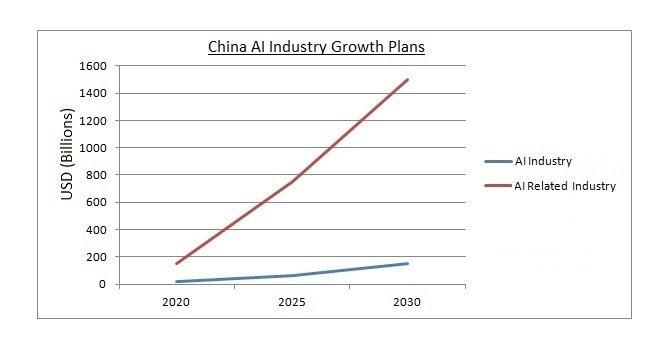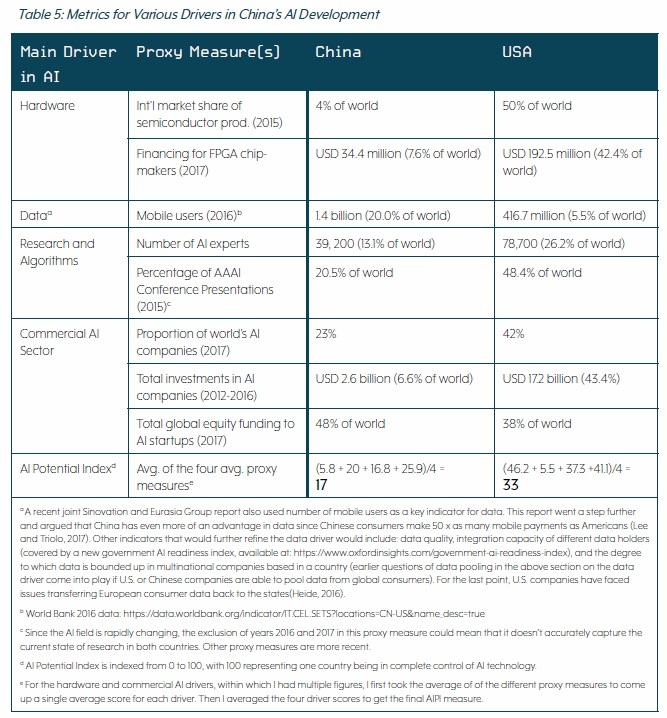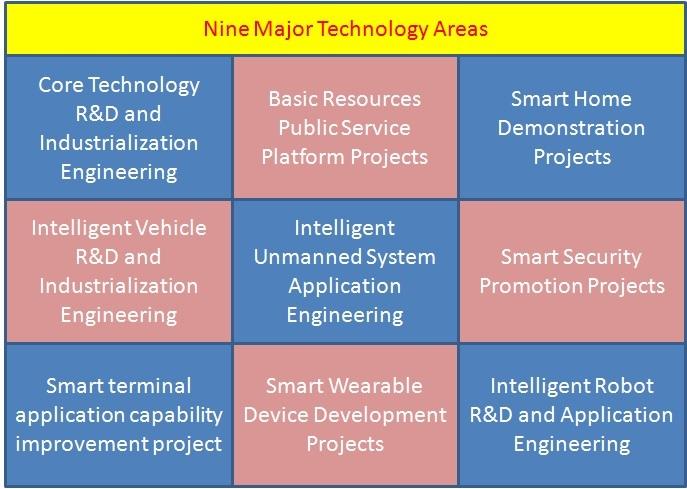
Deciphering China's Artificial Intelligence Dream
In March 2018, I read an article about the new Artificial Intelligence Arms Race which has been on my interests radar for a few years. What was new, was that this article referred to a paper from the Future of Humanity Institute, University of Oxford.
The paper is authored by Jeffrey Ding, an M.Phil in International Relations at the University of Oxford. Jeffrey has also a BA in Economics, Chinese and Political Science. Jeffrey's commentary referenced other studies which he included in his extensive list of over 175 references in his 44 page report.
The author splits the report in to four parts:
- Context - Placing China’s AI strategy in the context of its past science and technology plans, and other countries;
- Components - Relates key features of China’s AI strategy to the drivers of AI development (e.g. data, scientists);
- Capabilities - Assesses China’s current AI capabilities via a novel index, the AIPI (AI Potential Index);
- Consequences - Implications of China’s AI dream on safety, security, economic development & social governance.
Context
China has set a target for its AI industry to contribute at least $24 Billion to the Chinese Economy by 2020, $60 Billion by 2025 and USD $150 Billion by 2030. China closely follows the progress of AI industries in the United States, the EU, Japan, and the United Kingdom and aims to achieve primacy by 2030.

Components
The paper lays out the components for a successful AI story as:
- Hardware in the form of chips for training and executing AI algorithms
- Data as inputs for AI algorithms
- Research and algorithm development
- Ecosystem for commercial AI
The Chinese State Council’s AI plan outlines a two-pronged “gathering” and “training” approach. National-level and local-level “talent programs” are gathering AI researchers to work in China, while China’s tech giants have set up their own overseas AI institutes to recruit foreign talent. The training plank takes a long-term view to growing AI talent through constructing an AI academic discipline and creating pilot AI institutes. The “13th Five-Year Plan for Developing National Strategic and Emerging Industries” (2016-2020) identified AI development as 6th among 69 major tasks for the central government to pursue.
Recently, China surpassed the United States to have the most supercomputing facilities in the world at 167, compared to 164 in the U.S, and China’s Sunway TaihuLight, which uses Chinese-designed processors, became the world’s fastest system in June 2016.
A second example is Chinese company, Cambricon, a statebacked startup valued at $1 billion, has developed chips that are six times faster than the standard GPUs for deep learning applications and use a fraction of the powerconsumption. Moreover, equipped with a new “neural processing unit,” Huawei has arguably overtaken Apple in mobile AI chips.
Capabilities
The author has created the AI Potential Index (AIPI), which approximates countries’ overall AI capabilities. For each driver, he found proxy measures that benchmark China’s capabilities as a proportion of the global total. Thus, a country’s AIPI, scored from 0 to 100, represents its share of the world’s total AI capabilities

China’s AIPI score is 17, which is about half of the U.S.’s AIPI score of 33. China trails the U.S. in every driver except for access to data. One could argue that China’s lead in data would outweigh its deficits in other drivers. The AIPI is useful for testing these arguments. The author found that the relative importance of the data driver would have to be over four times that of each of the other three drivers for China’s AIPI score to equal that of the United States.
- Several caveats are important to note. The index is meant to be a first-cut estimate of the AI landscape, so the specific numbers are not as important as their relative sizes and differences. The methodology will need to be refined as this index is limited by proxy measures for which quantifiable, reliable data was collected for both the U.S. and China.
Nine Major Technology Areas
The NDRC has listed nine major areas in their Internet + Artificial intelligence three year implementation plan.

Eight Technology Types
The paper also references the New generation artificial intelligence development plan, issued by the State Council which contains these eight technology types:
- Knowledge computing engine and knowledge service technology. Research knowledge computing and visual interaction engine, research knowledge service technology such as innovative design, digital creativity and business intelligence based on visual media, and conduct knowledge discovery of large-scale biological data.
- Cross-media analysis reasoning technology. Research cross-media unified characterization, associative understanding and knowledge mining, knowledge map construction and learning, knowledge evolution and reasoning, intelligent description and generation, and develop cross-media analysis inference engine and verification system.
- Community smart key technologies. Carry out research on key technologies such as active sensing and discovery of community intelligence, knowledge acquisition and generation, collaboration and sharing, evaluation and evolution, human-machine integration and enhancement, self-sustainment and security interaction, build a service architecture of group-wise space, and study mobile groups. Intelligent collaborative decision-making and control technology.
- Hybrid enhanced smart new architecture and new technologies. Researched hybrid enhanced smart core technology, cognitive computing framework, new hybrid computing architecture, human-computer co-drive, online intelligent learning technology, parallel enhanced management and control of the intelligent framework.
- Intelligent technology of autonomous unmanned systems. Research on autonomous control of drones and intelligent technologies such as automotive, marine, and rail transit autopilot, service robots, space robots, marine robots, polar robotics, unmanned workshop / smart factory smart technology, high-end intelligent control technology, and autonomous unmanned operation system. Research on robot vision and robot arm autonomous control technologies based on computer vision, such as positioning, navigation, and recognition, in complex environments.
- Virtual Reality Intelligent Modeling Technology. This paper studies the mathematical representation and modeling methods of the virtual object's intelligent behavior, the natural, continuous and in-depth interaction between the virtual object and the virtual environment and the user, and the technology and method system of the intelligent object modeling.
- Intelligent computing chips and systems. Developed neural network processors and energy-efficient, reconfigurable brain computing chips, new sensing chips and systems, intelligent computing architectures and systems, and artificial intelligence operating systems. Research a hybrid computing architecture suitable for artificial intelligence.
- Natural language processing technology. Research on short text calculation and analysis techniques, cross-linguistic text mining techniques and semantic understanding techniques for machine-based cognitive intelligence, and human-machine dialogue systems for multimedia information understanding.
- From 2009 to 2011, the Thousand Talents program may have attracted the largest influx of high quality talent within a limited timeframe in all of China’s history, per data released by the Chinese Academy of Personnel Science. In those three years, 1510 scientists were selected as talent program awardees at the national level, out of an application pool of 6200. However, multiple empirical studies and interviews with recruiters for the talent programs reveal that these programs have not managed to attract the “best and brightest” Chinese scientists to return. A multitude of factors play a role, including: a research culture focused on instant results, lack of connection with domestic Chinese networks to advance, and problems with educational opportunities for their children. Nonetheless, as China works to reform its research culture and ramps up its efforts to encourage researchers to work in China, particularly those of Chinese descent, it could expand China’s pool of AI experts, as China’s scientific diaspora numbers over 400,000 scientists and other scholars.
Consequences
The paper goes on to cover consquences in the following areas:
- Emerging engagement in AI ethics and safety
- Tracking the potential of AI as a revolution in military affairs
- Economic benefits as a driving force
- Implications of AI for China’s mode of social governance
Other Information
For more information you can read the original paper here: Deciphering China's AI Dream - March 2018. Another summary of the state of China's AI program by Team Finland Future Watch.
Trending
-
1 How Does SaaS Differ From IaaS And PaaS?
Fabrice Beaux -
2 Single Page Applications vs Multi-Page Applications
Fabrice Beaux -
3 Top 7 Effective Strategies for Multi-Language Website Development
Fabrice Beaux -
4 Boost Engagement to Infinity and Beyond: Unleashing AI-Driven Support
Anas Bouargane -
5 The Cheapest And Most Beautiful Stickers in CS2
Daniel Hall





Comments